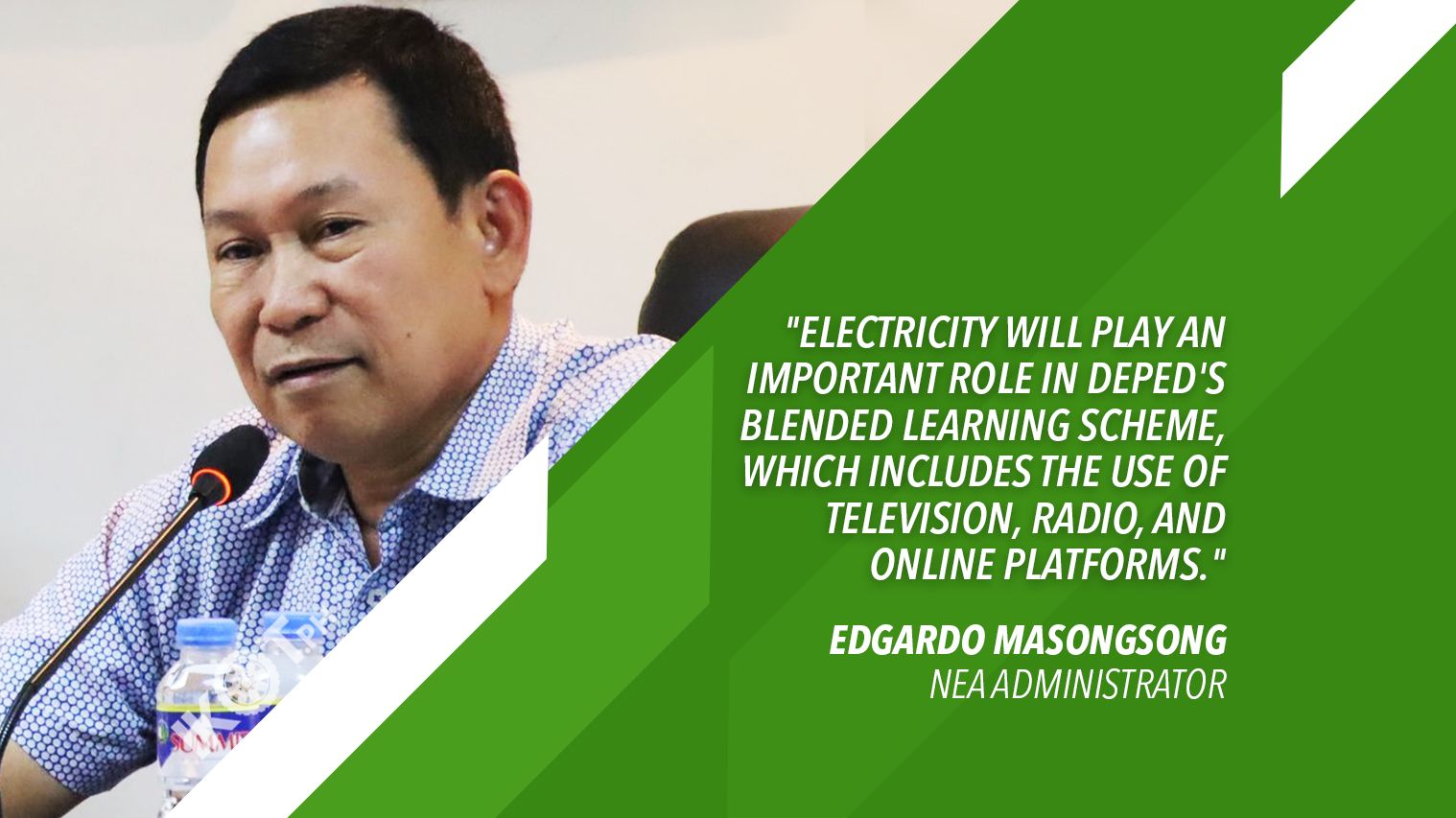The National Electrification Administration (NEA) has directed the electric cooperatives (ECs) to ensure reliable and sufficient electricity to households in rural communities as the education sector shifts to a “new normal.”
NEA Administrator Edgardo Masongsong issued the statement as the Department of Education (DepEd) prepares to implement a blended learning approach for students in the coming schoolyear amid the coronavirus disease 2019 (COVID-19) pandemic.
“Power distributors like ECs can also be internet service providers in their respective coverage areas.”
“Electricity will play an important role in DepEd’s blended learning scheme, which includes the use of television, radio, and online platforms. Also, the need of fiber optic cables in the power distribution systems is now very relevant to the recent pronouncements of DepEd,” Masongsong said.
The NEA chief said power distributors like ECs can also be internet service providers in their respective coverage areas, as some co-ops, particularly those in Mindanao, already have existing fiber-optic cable infrastructure.
Masongsong also urged the ECs to consider setting up microgrids and solar home systems to connect remote communities without access to electricity.
There are still 1,874,709 unserved consumers within the coverage areas of 121 ECs.
Latest data from the NEA Information Technology and Communication Services Department (ITCSD) showed there are still 1,874,709 unserved consumers within the coverage areas of 121 ECs across the country.
To date, the overall level of energization within the coverage areas of non-profit distribution utilities nationwide is at 95 percent or 13,625,857 connections out of the 14,335,784 potential consumers based on the 2015 census.
NEA data also showed that 47 percent of these consumer connections, or 6.429 million, are located in Luzon; 27 percent or 3.641 million are found in Visayas; and 26 percent or 3.556 million are in Mindanao.

